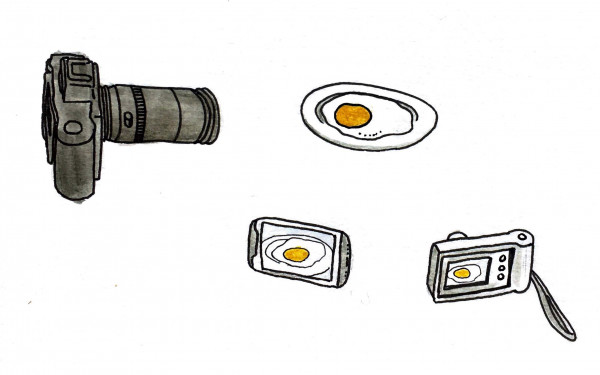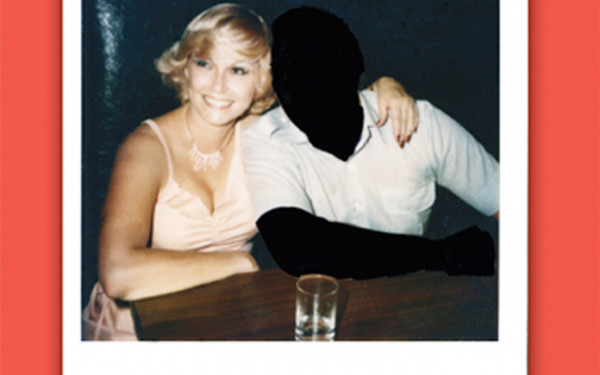The Memory Keeper of New York City
Photographer Ash Thayer Releases Book on Squat Communities in Manhattan’s Lower East Side
In today’s gentrified New York City contaminated by bourgeois bohemians, it’s difficult to imagine how the sleepless Big Apple was once a cesspool of poverty and crime. Collective memories and photographs now serve as reminders of the city’s grittier days.
Documentary photographer Ash Thayer is the memory keeper of the Lower East Side of Manhattan in the 1990s. Her new photography book, Kill City: Lower East Side Squatters 1992-2000 is a window into the lives of individuals who occupied the many abandoned and decaying tenement buildings of the Lower East Side. Thayer offers a picture of New York’s squatter community, its DIY scene and mayor Rudy Giuliani’s gentrification initiatives.
During the 1970s, New York was affected by a serious budget crisis. Unable to pay property taxes, many landlords abandoned their properties or burnt them down in order to obtain insurance payouts. Between 1980 and 1986, the city took part in President Jimmy Carter’s Urban Homesteading program, which helped residents rehabilitate these homes and granted ownership to their residents. But the program was mismanaged and then cancelled by the Reagan administration, prompting the Association of Community Organizations for Reform Now (ACORN) to launch squatting campaigns across the Lower East Side. People of low-income began settling in.
Thayer was one of those residents. A student at the School of Visual Arts, she decided to photograph the community for her assignments and for personal intentions.
“In 1992, I moved to New York and studied photography. I got kicked out of my Brooklyn apartment and [was] on the verge of dropping out of school because I couldn’t afford tuition and rent. I shared my situation with a young local punk guy, Brett, who I’d met in Tompkins Square Park and at punk shows. He offered me a place to stay in his building, and out of financial necessity, I was in,” said Thayer.
The reclaimed urban space she moved into was See-Squat, located at 155 Avenue C. The building possessed minimal electricity, had no running water and was structurally unsound. Unsuitable for habitation, residents had to renovate the entire building themselves, at their own costs.
“This space was special and unique. It really was a close community. I learned how to do construction work, to build walls, [to] handle electricity and plumbing work,” Thayer said. “I learned how to live communally and the value of community while working on projects in groups. I learned how to make a
difference together. It was an accomplishment to learn how to build stairs and refurbish an apartment. I was great to spend quality time with people I cared for.”
Living conditions were not always easy, yet the act of squatting fit their anti-establishment views. Residents of the squats were advocates for the basic human right to possess a rooftop that wouldn’t collapse and for improving conditions in low-income housing.
“The simple act of living in this space was a form of activism,” Thayer asserted.
The Lower East Side’s Scene
The LES was also a cradle for punk rock subculture. Thayer explained that living in the squats increasingly exposed her to punk music and social activism. The subjects that appear in her photographs are her friends. Her goal was to capture the community surrounding her.
“I was photographing what was meaningful in my life. I had teachers who told me, ‘photograph what’s the most important thing in life to you,’ so that, to me, [was] the community that I was involved in,” Thayer explained.
Thayer’s images portray the punk concerts that took place place in basements, the communal restoration of the tenement buildings, the eccentric vibrancy of her community and their DIY ethics.
Her photographs also highlight how women within the scene fought against mainstream social definitions of beauty and femininity. Women rocked androgynous looks by sporting concert T-shirts or work uniforms with steel-toe boots.
In an interview featured in the book with Dana Hoey, a visual artist, Thayer explained that they were conscious feminists. “We shopped at thrift stores, and the new things we bought were utilitarian for the work we were doing or for warmth. […] I think we were attempting to strip down the artifact to see what was underneath and then building from there,” she said.
“One can argue that you cannot ever fully escape social construction, but we were trying our damnedest. I wore Black Carat jeans […] sewed the legs into a tighter fit, and military cargo pants, both in the guys section of the army surplus store.”
“I learned how to live communally and the value of community while working on projects in groups. I learned how to make a difference together. It was an accomplishment to learn how to build stairs and refurbish an apartment. I was great to spend quality time with people I cared for.” — Ash Thayer, Documentary photographer
Eviction
By 1995, the city’s administration had started to evict communities out of squatter houses on East 13th Street. Mayor Giuliani sought to implement the “broken window policy,” enforcing strict laws against urban disorder, vandalism and anti-social behaviour. According to The New York Times, Giuliani viewed squatters as dishonest cheaters who could easily afford to pay rent.
The “broken window” analogy derives from an article in The Atlantic, written by Georges L. Kelling in March 1982.
“Consider a building with a few broken windows. If the windows are not repaired, the tendency is for vandals to break a few more windows. Eventually, they may even break into the building, and if it’s unoccupied, perhaps become squatters [and] light fires inside,” wrote Kelling.
Thayer explained that intense organization and planning took place in order to delay eviction. Squatters gathered various objects to barricade their buildings and lead a fight from inside. Even aware of their approaching defeat, squatters stayed inside. Police broke into their homes and SWAT teams with dogs expelled residents.
“The LES has always been the shadier part of Manhattan and [the] more dangerous because of the tenement-style buildings, which made it harder for developers to gentrify the area,” said Thayer. “It has a longstanding history [of] poverty, multi-ethnic communities and drugs during the ’80s and ’90s. Mayor Giuliani with his whole administration started a crackdown across New York City, so things started shifting into a police state.”
Thayer’s photography book is an important body of work because it is a historical recording of New York’s forgotten past. In today’s New York, where rent can cost $2,500 for a room the size of a closet, this book pays homage to social activists such as Frank Morales and others appearing in Thayer’s photographs, who have fought and continue to fight for affordable housing.
“No one has given a shit [about] these photographs until now. I’ve been trying to show this work since I made it. Not consistently, because you get tired after a while,” said Thayer.
“It’s weird to be a memory keeper of these people and period of life, but it’s been great because it allowed me to stay in touch to find out what they are up to now and what’s happening in their life.”

_900_597_90.jpg)
_600_832_s.png)



